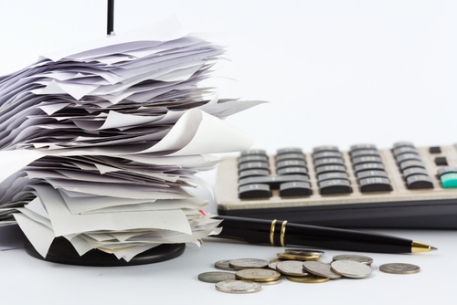
Square talked about the value of a receipt in January at the NRF. Today, oodles of merchants and ATM deployers are convinced that receipts are the new “white space” to communicate with and up sell their customers. But which serves the purpose better – paper or digitized versions? The answer may surprise you.
Something as simple as the confirmation of a transaction is becoming prime space for merchant marketing and promotions. But should it come in the form of paper, or as digital content?
A couple of trends have emerged regarding receipts that may or may not conflict. On the one hand, there is growing recognition that the little piece of paper the clerk hands shoppers at the end of the sale, or that ATMs disburse after withdrawals, is valuable real estate for sending messages to customers.
On the other hand, the use of paper receipts is quickly going the way of the dodo as digitization takes hold and merchants and ATM deployers find new ways to use emailed or texted receipts.
Paper’s not dead yet, however. During the recent holiday season, Kohl’s used paper receipts as the basis for a promotion in which it gave away more than $1 million in merchandise to customers chosen at random to have their tab picked up by the merchant. More than 12,000 “Dream Receipts” were awarded in the campaign. Customers who didn’t instantly win a Dream Receipt were invited to take a photo of their receipt and submit it via Instagram or Twitter for the opportunity to win a $100 Kohl’s gift card.
Receipt management
Marketing and promotions, though, may be a secondary strategy as some merchants look to make receipt storage a key part to their own mobile initiatives as an added convenience for their customers.
More and more, retailers and ATM providers are giving customers the option to receive their receipts via email or text message. Does doing so make them a more effective communications vehicle, or do most emails and text messages fall into the digital black hole equivalent of a pants pocket?
Some retailers believe electronic versions of receipts better serve the “digital customer,” who stores receipts in a phone or PC. The more consumers tinker with receipts in that way, the more likely they’ll notice what’s printed on them. That’s the theory anyway.
One of the latest merchants to begin pushing eReceipts is Walmart, which has a new platform rolling out that ties to its mobile program. “We want be the leader at the intersection of digital and physical,” Wendy Bergh, vice president of mobile and digital strategy at WalmartGlobal Ecommerce, said in an interview with Mobile Commerce Daily. “It is a critical piece of Walmart’s strategy to lead in retail, and eReceipts is one of the technologies that we believe is going to help accelerate us on that front.”
Unlike other merchants that digitize receipts and leave it up to the customer to organize them, Walmart’s mobile app stores all of the data. “The customer will be able to come to that place in the app, they will be able to search their eReceipts, they will be able to access them whenever they want,” Bergh said. “They will be able to look through their eReceipts and, if they want to add an item to their shopping list, they will be able to do that very easily. So it integrates with other parts of the app very easily, making it contribute to the overall mobile experience.”
Also during the interview, Bergh noted that eventually Walmart could use the information from eReceipts stored in wallets to provide recommendations to customers on ways to save money or to remind them of products they might have forgotten to place on the shopping list in the wallet.
Customer convenience
ATM deployers also are seeing the value in eReceipts. Wells Fargo & Co., for example, last summer introduced text receipts at its more than 12,000 ATMs nationwide. The service complemented Wells’ earlier move in 2010 to send ATM receipts via email as an option. At the time, almost half of all receipt-eligible ATM transactions resulted in customers selecting an e-receipt or not printing a receipt at all, according to Alicia Moore, head of Wells Fargo ATM Banking.
Wells’ customers have received close to 200 million ATM eReceipts. “Our customers tell us they appreciate the ability to reduce paper waste – text receipts just give them one more option,” Moore said.
Other banks also now support ATM eReceipts. Citibank, for example, launched emailed receipts in September 2012 as a means for customers to more easily keep track of their ATM activity.
Customer feedback
Marketing and reducing paper waste are not the only purposes behind the recent eReceipt movement.
Earlier this month, for example, Square discontinued it mobile wallet but at the same time launched a new feedback tool. The tool enables merchants to use eReceipts to ask their customers about their experience.
Customers who choose to get their receipts digitally receive a prompt that requests they rate their experience across a variety of categories, including wait time, quality, customer service and environment. Square then feeds the data back to the seller.
Sellers receive a notification when feedback is received and may directly respond to through text or email. Square claims to process 10 million digital receipts per month.